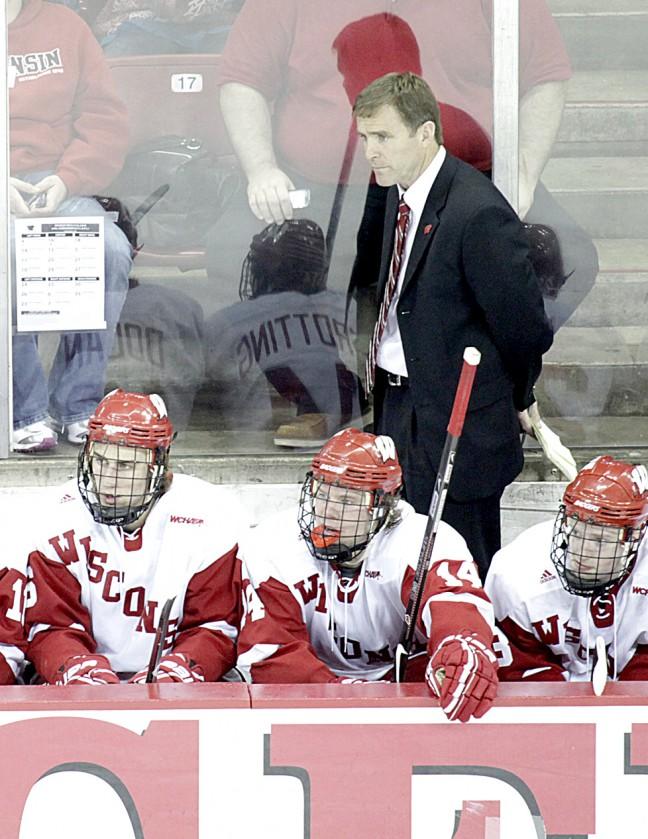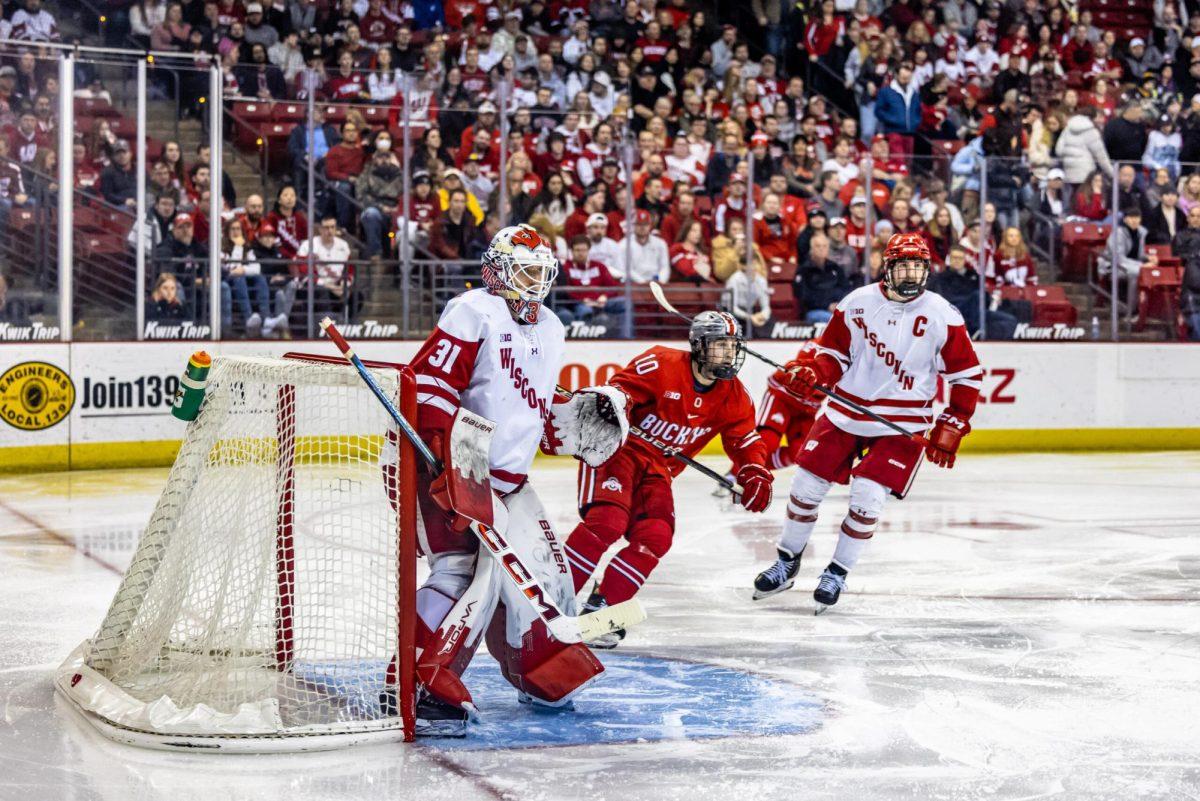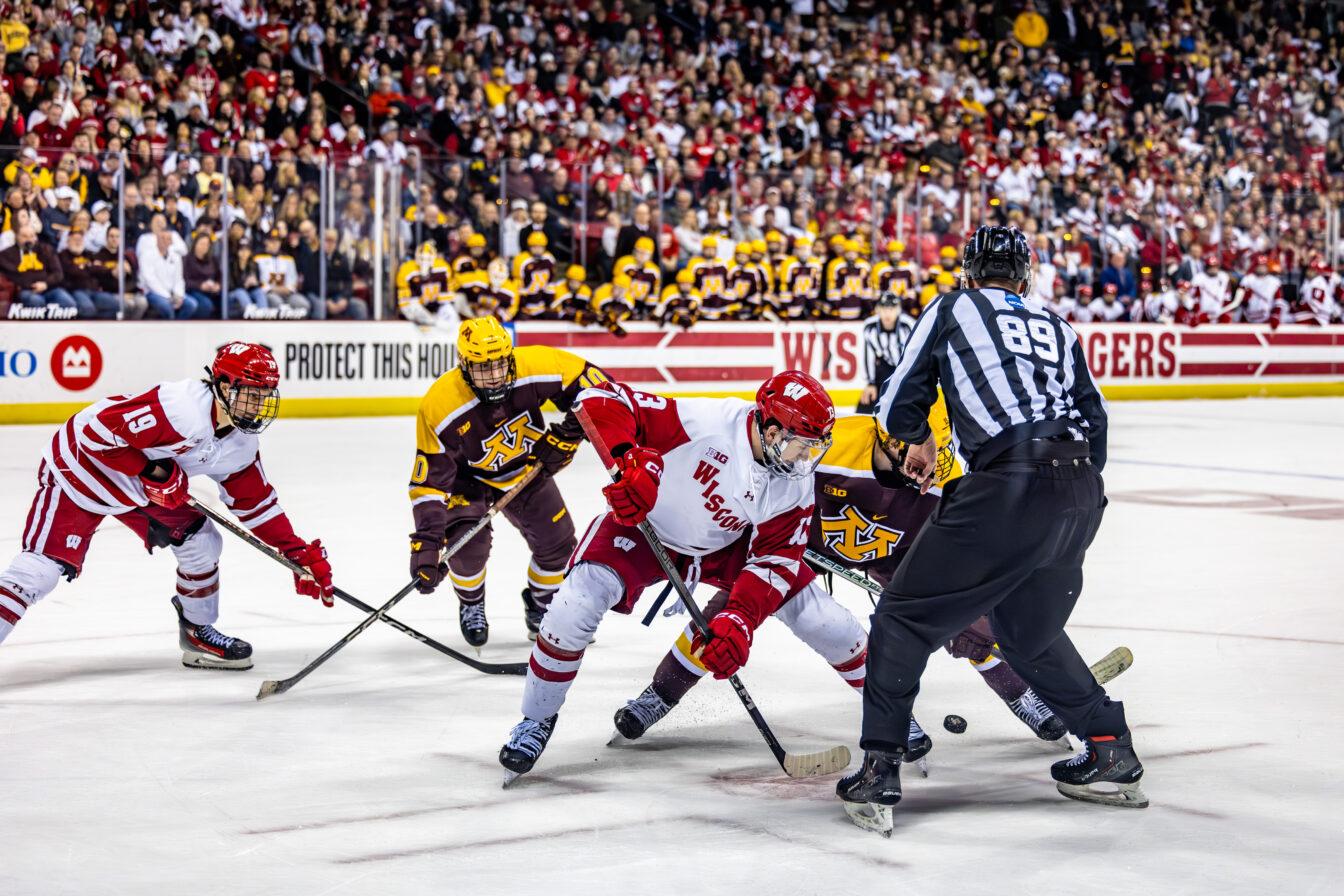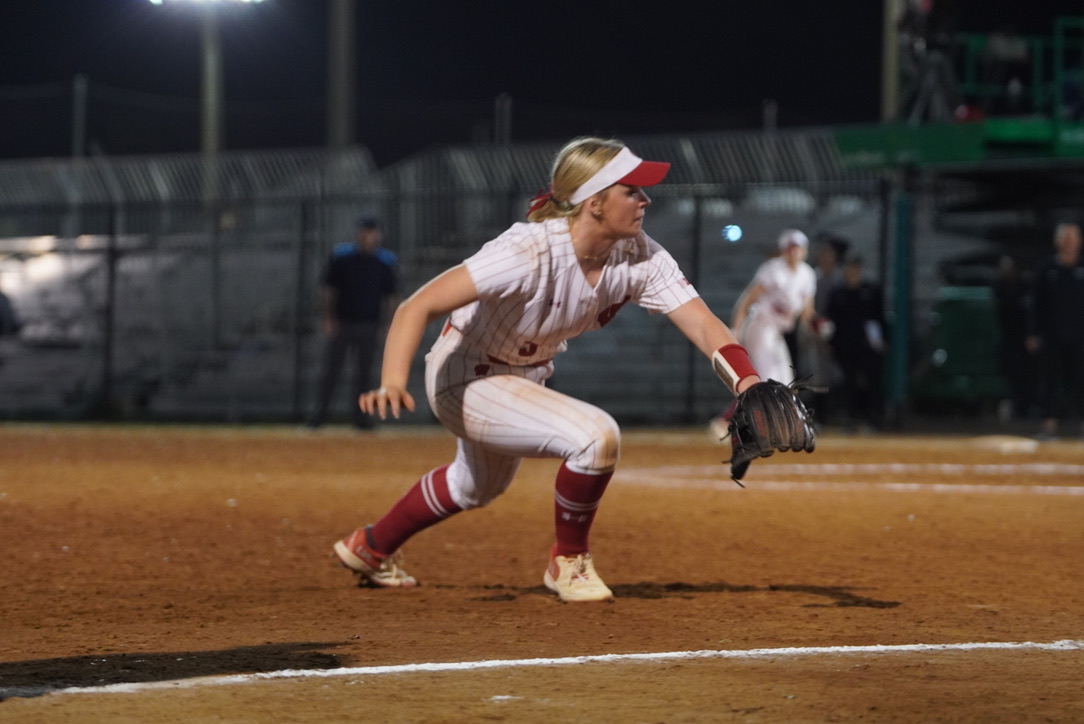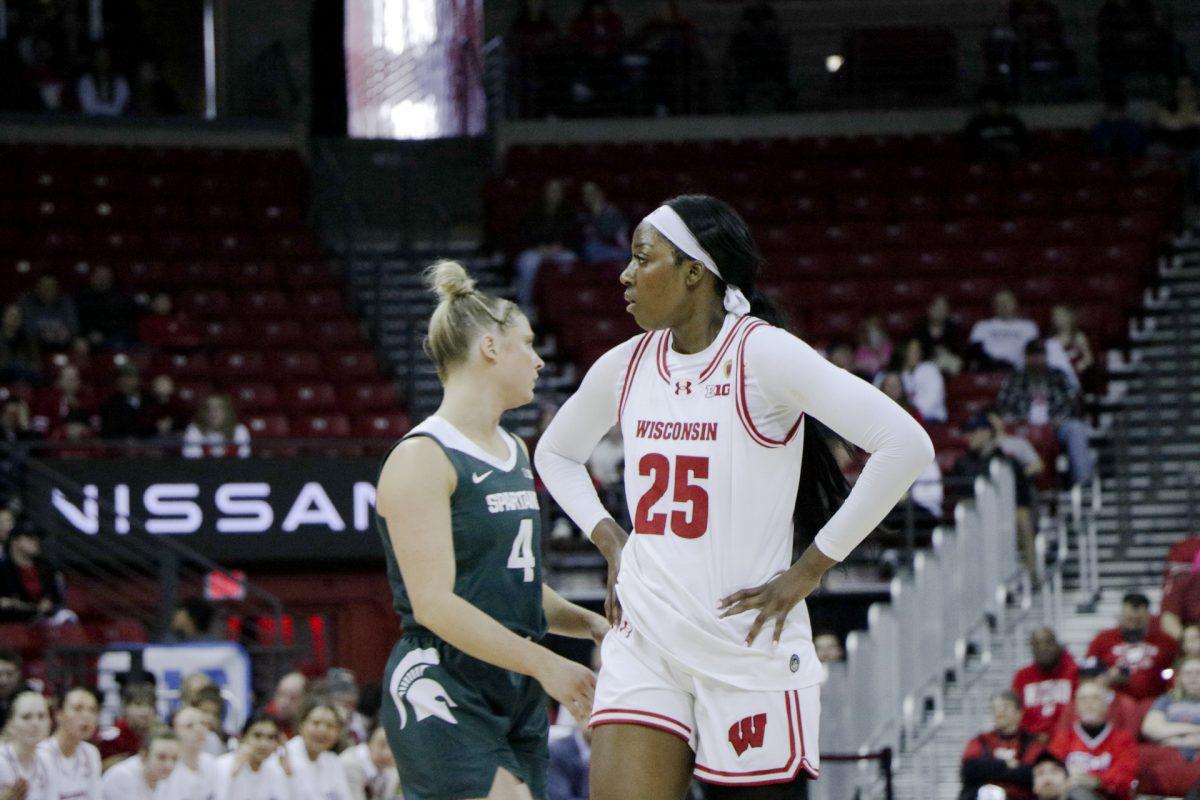There are no broken bones, no apparent bleeding and no stitches to be made. But concussions are among the most serious — and most common — injuries in sports.
It’s easy to fix a broken finger; it’s a lot harder to fix a broken mind. Likewise, while ice can help reduce the swelling from a broken bone, icing the brain is not exactly an option.
Yet, until recently, concussions were viewed as just a part of the game in most contact sports, especially ice hockey.
Having suffered 10 concussions during his eight-year NHL career, Mike Eaves, head coach of the Wisconsin men’s hockey program is quite familiar with such head injuries and the mentality that came along with them at the time.
“It was accepted that guys got their bells rung,” Eaves said. “So you got your bell rung, shake it off. You got a little headache; it’s OK. Just be tough and play through it.”
Eaves’ last concussion came on Sept. 21, 1985, when he collided with Pat Price of the Quebec Nordiques during Calgary’s preseason opener in Quebec City.
That hit was the first one that really made him think about the impact of concussions on his future, Eaves said. While it was not one of the harder hits he’d been on the receiving end of in his career, it still resulted in a concussion, sending a message to Eaves, who was 28 years old at the time.
“When I went to go out on the power play, I got this feeling of d?j? vu like I’d been there, and for the first time it spooked me,” Eaves said. “I thought, ‘this is not right. I did not get hit that hard to have this happen.’
“All the other concussions, I’d been hit a lot harder — there was no question I was coming back. But I was 28 years old, the neurologist did all the tests, and I remember him saying, ‘Mike, you don’t have any permanent damage right now. But I can’t guarantee you, because of your history, that next time you get hit something bad won’t happen.'”
One month later, Eaves retired for the first time on Oct. 21, 1985. He would return briefly during the 1986 Stanley Cup playoffs when Flames forward Carey Wilson was forced out of the lineup with an injury.
Eaves played in eight of the Flames’ final 11 games, and he retired for a second and final time after Calgary lost in the Stanley Cup finals.
Of course, Eaves certainly is not alone as far as concussions and hockey are concerned. Some of the greatest players in NHL history have had their careers affected or even shortened by concussions.
Since 1996, more than 30 NHL players have had their careers ended by concussions. Among them is Eric Lindros, who suffered eight concussions in his 13-year NHL career.
According to Eaves, keeping his head up — something Lindros never had to do as a kid because he was always the biggest — may have saved Lindros a few visits to the trainer.
“All of a sudden, he turns pro. Guys are pretty big and strong, and he gets caught with his head down, and look what happened to him,” Eaves said. “You’ve got to know where people are; you’ve got to know what’s going on around you on the ice.”
Another Wisconsin and NHL alum, Chris Tancill, suffered four concussions during his professional and amateur hockey career.
For Tancill, who now coaches the Junior Jets 1998’s (11-12 year olds) hockey team in Madison, the last concussion was by far the worst.
“You can YouTube me and see. I got knocked out,” Tancill said. “My last NHL game, actually, I got knocked out with a concussion, and I missed about six weeks. That year, with the Dallas Stars, they did a concussion test at the beginning of the year, and they did a test after I got hit, and they realized that I was a little messed up, so they sat me down.”
While the test performed on Tancill in 1998 was not as technologically advanced, it was a precursor to what has made such a difference in concussion treatment today. The ImPACT test, which two doctors developed in the early 1990s, is a 20-minute computer-based test that has become the most widely used system for concussion management.
The test is administered before the season to establish a baseline, and athletes undergo the ImPACT test again following a concussion to evaluate their progress toward a full recovery.
“It’s a series of tests involving words and numbers that focus on memory and reaction time,” UW athletic trainer Andy Hrodey said. “After a concussion, your brain doesn’t work as well sometimes; it’s slowed down, so to speak. So, in the first one, you may have trouble remembering those words. In the second one, your reaction time may be slowed down.
Its popularity has grown rapidly, and nearly every team in the NHL, NFL, MLB and MLS, as well as a handful of NBA teams, currently use it. At the University of Wisconsin, every athlete takes the test when arriving on campus as a freshman, providing a baseline that can be used throughout his or her four- or five-year careers.
ImPACT testing is beginning to pop up in high schools across the country as well, including a number of Wisconsin schools. Students who participate in contact sports at both Madison West and Edgewood High School in Madison began taking the test this year.
“Our athletic director said, ‘I want everybody ImPACT tested,'” West hockey head coach Brett Farley said. “If there’s any sign at all that we think that they might’ve gotten hurt with a head injury, they go see the trainer. … Concussions, we don’t even mess around with it. She gets them tested again, and they don’t come back until the test is in the clear.”
In addition to ImPACT testing, Farley’s team has taken part in the Messier Project, which introduced new helmets designed specifically to help prevent concussions in hockey.
According to its website, five NHL players, six AHL players, seven NCAA schools and a large number of high school, prep and youth programs currently wear the Mark Messier-sponsored Cascade M11 helmets.
For the West hockey team, this decision was not, however, one made by the school. Instead, one particular player’s parents bought him the helmet after hearing about the project. Shortly thereafter, 15 others followed suit on the Regents’ 20-player team.
Since adopting the new helmets, West has had just one player suffer a concussion. Coincidentally, that player also happened to be one of the four who did not purchase one of the new helmets.
“What Messier is doing goes beyond simply trying to bring awareness to the problem of concussions,” Farley said. “He’s going to a manufacturer and having them build specific helmets that protect against concussions. It shows how much he cares about the issue.”
Along with specifically designed helmets, mouth guards are another piece of equipment that some suggest can prevent a concussion. But while well-designed helmets that insulate the skull and brain are widely accepted as a preventative measure, opinions on mouth guards vary from person to person.
For example, Farley and Hrodey are among those not convinced that mouth guards provide any additional protection.
Yet, Tancill and Pete Rothering, hockey head coach at Edgewood High School, believe in the protection that can be provided by a mouth guard that is molded to fit each player.
“While helmets are certainly the most important piece of equipment in that regard, mouth guards also are an important element of concussion prevention,” Rothering said. “An elbow to the head on a blindside hit is one of the most common causes of concussions. Oftentimes these hits can be to the jaw, which can send the impact to the skull and the brain.
“With a well-fitted mouth guard, the severity of that impact can be reduced, which can either prevent a head injury, or at the very least, reduce the severity of a concussion.”
Little evidence exists to prove that concussions can be prevented using mouth guards. But they are recommended for dental purposes at all levels and required for youth above the age of 12 through the high school level.
Still, there’s only so much that equipment can do for concussion prevention. The biggest changes that have been made and can still be made come through a transformation in the culture and mentality of those involved in hockey regarding head injuries.
As Eaves mentioned, it was part of the game for years. Concussions, getting your bell rung, headaches, they all were just something that was dealt with and played through.
Today, through ImPACT testing at all levels and the development of new policies regarding hits to the head, concussions — especially multiple concussions sustained by one player over a short period of time — are becoming less likely.
For example, hits to the head have become a specific on-ice penalty at the college, high school and youth levels. In the NHL, suspensions and fines can be levied, though no on-ice penalties can be called.
Such a policy is just one example of the impact different levels of hockey have on each other.
Across the board, whether it is new helmet designs, other equipment innovations or policy changes on policing head injuries in the game, things typically operate from the top down in hockey. As something, such as concussions, becomes an issue at the NHL level, it funnels down to the college level, then high school and finally to youth hockey.
This can have an impact on youth, high school and college hockey in two ways. First, they implement new policies based on what the NHL does in previous years. But additionally, policy changes at the top, once they reach the lowest levels, become the norm.
Young athletes who grow up with required equipment or special attention paid to hits to the head become more accustomed to and accepting of such policies as they continue to grow and move up the ranks. As a result, it’s easier to police at the higher levels as well.
“It takes some time for things to go from the pros to college to the high school level,” Rothering said. “With the added emphasis on head shots this year in college and the NHL, it’s likely we could see even more focus on it at our level next year.”
With the amount of contact in the game of hockey, however, it’s nearly impossible to avoid being hit or even hits to the head. But one way to lessen the frequency of such hits is through proper instruction of fundamentals and techniques at all levels.
Rothering, who played hockey through high school, spends a considerable amount of time teaching his players to play the right way — with their heads up and elbows down while avoiding checking from behind.
This season, three Edgewood hockey players suffered concussions, which Rothering said is about average. While he does all he can to teach his players to avoid causing or receiving concussions, Rothering continues to emphasize proper post-concussion treatment.
“It’s not like an injury to your hamstring or your shoulder or your leg,” Rothering said. “It’s not something you can just tough out. I think it’s especially important for kids to keep that in mind because returning too soon makes you more susceptible to suffering another one.”
However, the drawback of such increased focus on hits to the head became apparent for Eaves and Wisconsin this year in the Frozen Four.
During the championship game, UW’s John Mitchell was penalized for a hit to the head that appeared to be nothing more than a Boston College player failing to get out of Mitchell’s way.
Eaves was unhappy with the call in the Badgers’ final game because he did not believe that kind of hit, with hockey being a contact sport, was what the rule was implemented to stop.
“That’s not what it’s meant to do,” Eaves said. “But at the same time, when guys are getting blindsided and hits to the head, then I think those are the things that we’re trying to take out of the game. Guys are skating faster, equipment is a lot harder, and I think we have to put more emphasis on the guys hitting to make sure that they understand what’s going on.”
In addition to calling penalties for hits to the head, Eaves suggested another option for reducing concussions at the college level, one with which some may not agree. One person who does share a similar point of view, though, is Tancill.
Both Eaves and Tancill, who played at UW and in the NHL, think eliminating the full facemask style helmets in college and switching to a pro-style half shield would make a difference.
They believe the additional facial exposure instills more fear and respect into the players who are less protected than with the full facemask.
“I think that at the college level you’ll see headshots maybe more because they’re wearing the full mask,” Tancill said. “As you get to the pro level, there’s a little more respect to hopefully keep the elbows down, but you’re still seeing a lot of that.”
Eaves agreed, though he wasn’t sure the collegiate game would ever switch.
“If we took off the full face mask and we went to a half shield, there’d be more respect and fear in the game and guys would slow down and be more responsible,” Eaves added. “When you put that cage on, there’s no fear. I’ve had a cage on after I played; you feel invincible inside that thing.
“But if you know that you can get your jaw smacked or your nose broke or your lip cut, you’re going to play with your stick down and you’re going to play more controlled is my feeling. I don’t know if the NCAA will get to that point, but I’m sure that it would help.”








